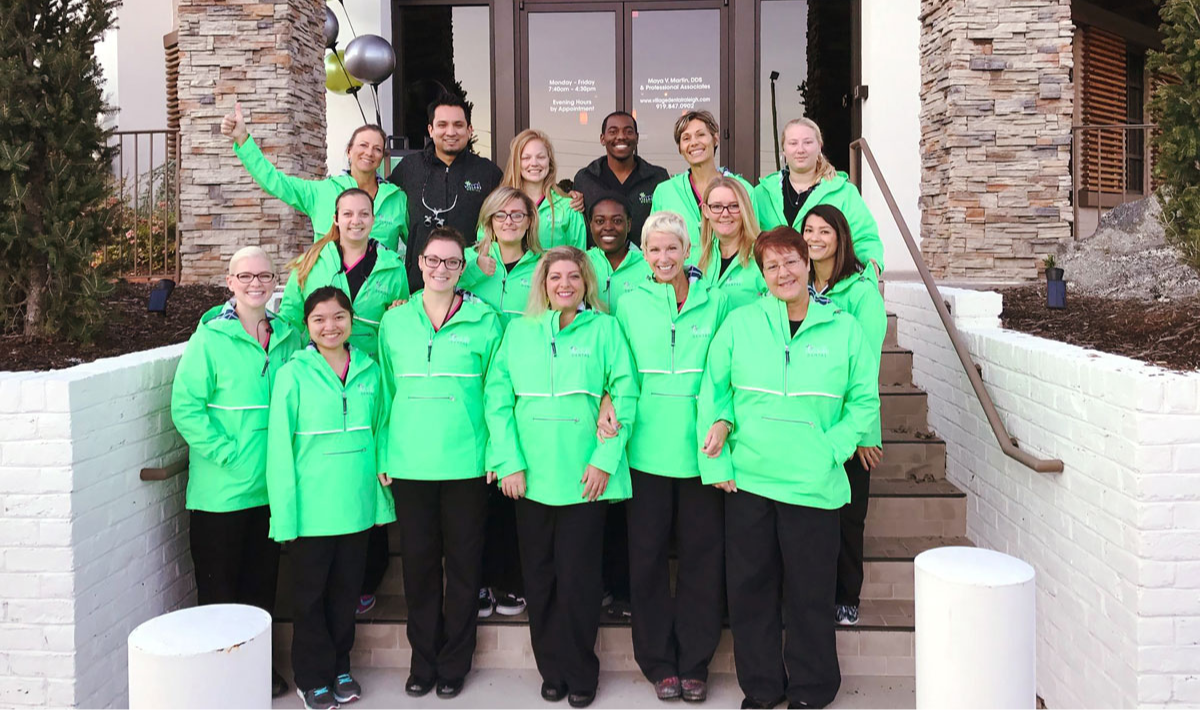How Dr. Chris Martin took the next step in his leadership development without missing a step operationally.
By Pete Mercer
Many dental leaders today are wondering whether it’s time to take a step back from operating in the chair. Indeed, there are many important components to running an efficient, successful dental group practice beyond just the clinical aspects. This isn’t an easy call for everyone, but it might be the best thing you can do for your organization, fellow doctors, and your team.
The hard part is the transition itself. Production is what many dentists do best, so you need to ensure that your business acumen is where it needs to be to run your organization and that you still have your company staffed at the appropriate level for the clinical workload. Finding the right path and timing can be tricky, but it could prove to be an invaluable move for your professional development and the profitability of your organization.
DEO Magazine spoke to Dr. Chris Martin, founder and chairman of the board for Village Dental, about cutting down his time operating in the chair so he could focus on other aspects of the business. Village Dental is a multi-site dental organization based in Raleigh, North Carolina, with a major focus on sedation dentistry via IV sedation.
Stepping back from the dental chair
Dr. Martin said he has effectively reduced his time in the chair to zero. By necessity, he has cut his chair time, but he truly enjoys the practice of dentistry and loves having the option to practice when the need or want arises. Instead, he pours his energy into other areas of Village Dental.
It all started during the COVID pandemic when the team and organization needed him to step into a leadership role and out of 40 hours per week of chair time. Dr. Martin and the organization are big proponents of the DiSC behavioral profile for ‘best seat on the bus’ analysis. To better understand his perspective and interests regarding the workplace, Dr. Martin took a DiSC profile test, a personality assessment that focuses on four personality profiles: dominance, influence, steadiness, and conscientiousness:
- “D” personalities are more dominant, task-oriented and emphasize results.
- “I” personalities focus more on relationships and influencing others.
- “S” personalities are dependable and value cooperation and sincerity.
- “C” personalities place an emphasis on quality, accuracy, expertise, and competency.
It turns out Dr. Martin is high on the Influencer profile. Although he truly enjoys dentistry, his particular personality profile was well-suited to step up and lead during the difficult time the team was experiencing. “My profile is a high ‘I,’ so I’m like the Oprah Winfrey of our company,” Dr. Martin said. “Discovering that teaching dentistry could be a point of strength for me was enlightening and worked well during the difficult time we were experiencing during and post-COVID. I really enjoy being with people and interacting with teams. This works very well for me personally and helped fulfill my vision to build a dental business, not only a dental practice.”
Once he decided to take a step back from the chair, he needed to fill that role to ensure that there were no gaps in care. Village Dental has found that the DiSC tool is helpful in knowing which team members, including doctors, are best suited for long-term associate/team member roles and which ones may want to step into leadership.
Village Dental is using the assessment company-wide to better identify strengths and roles. An assessment like this is a powerful way to identify potential leaders in your organization that you might not have seen before.
Based on the results, take the time to sit down with your team to discuss what this means and how they can chase their own purpose within your company. It’s important to understand that all personality profiles can lead, but there are different strengths they draw from and will thrive or fail depending on the ‘seat on the bus’ they are leading from. You might have someone in a position where they aren’t fulfilling their potential – encourage them to take the assessment and trust the process. These are the kinds of decisions that can change everything. As an Owner/Doctor it is very hard to see the team operating if you have your head down and involved with patient care full time.

Making the transition
Like most transitions, moving from the dental chair into a more executive role is going to be a multi-step process that will take time to fully implement. There are so many doctors out there who have focused on production for their livelihood because production is what brings money into the practice. ‘Leadership is not about Production, it’s about RE-production’. Building others up to think and perform as you do is the key. This is what makes getting the transition right so important.
For Dr. Martin, the most important component of this process was having great training systems to bring new personnel up to speed. He talked about the idea of a “treadmill operator,” which is often the first stage of business. Essentially, this means that you are stuck on this treadmill of production, doing all the surgeries and making all the money. It’s exhausting.
“You can’t take a vacation because that’s a week out,” he said. “That is 25% of your revenue gone and there goes all of your overhead, so you made no money that month. When you come back to work, you have to go two more weeks to build your schedule back up. At that rate, you have had a two-month window where you did not make any money. That’s a miserable place to be as an entrepreneur.”
The best way to make this transition is to train the people who are going to take your place. Take the time to dial into the kinds of procedures and processes for your dental practice, ensuring that each of your team members understands in great detail what your top revenue generators are and how they should be performed at your organization. Iron out the methodology and create training materials that your doctors can reference for each step of the process.
Dr. Martin said, “You really have to spend that time on the front end to get those systems in place, so that you’re not just saying, ‘Hey, you’re a doctor! Come on in and do dentistry.’ I have never seen that work and I think it’s a recipe for disaster. I want to be able to go in and know that the quality of the dentistry, the staff experience, and the patient experience is the same in each of our pods in each of our offices. It’s also very important to keep in mind that you are going to feel that it’s ‘always broken’. That’s a blessing and a curse. Lean into it. That means you care, and learning how to let go of the things you cannot control and have the strength and discipline to prioritize and work the problems you can control, is the new paradigm you must accept. So do as Dave Ramsey says: ‘Take courage…and lead!’






